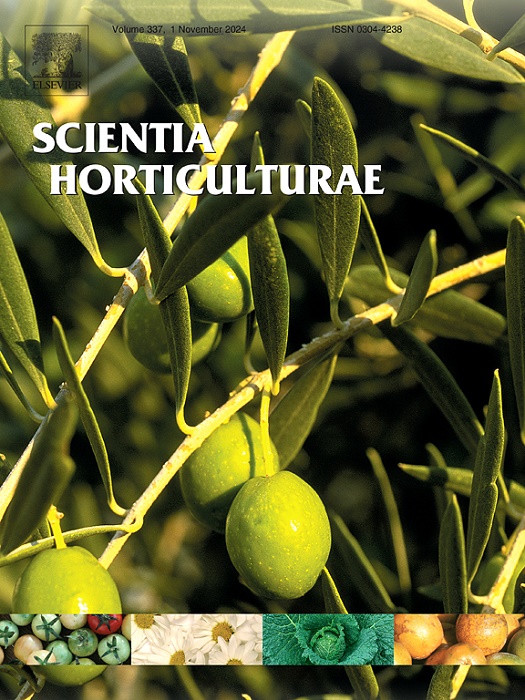植物多酚氧化酶研究进展述评。
IF 3.9
2区 农林科学
Q1 HORTICULTURE
引用次数: 0
摘要
多酚氧化酶(PPO)是一种由核基因编码的含铜酶,广泛存在于植物、动物、真菌和细菌中。在氧气存在的情况下,PPO催化植物中酚类化合物的氧化,导致醌的形成,醌随后聚合产生黑色素。这一过程最终导致酶促褐变,对水果和蔬菜的感官质量和营养价值产生不利影响。为了全面、系统地了解PPO,本文综述了PPO的蛋白质结构、理化性质、生理功能(如应激反应机制)、PPO活性与酶促褐变的关系以及通过抑制PPO活性来缓解褐变的策略。此外,我们讨论了提高PPO活性的策略,以帮助植物应对不利的生长条件。最后,对PPO的未来研究方向进行了展望。综上所述,本文对PPO的生物学功能进行了全面的综述,旨在为今后植物抗逆性和果实品质的研究奠定理论基础。本文章由计算机程序翻译,如有差异,请以英文原文为准。
Revisiting the advancements in plant polyphenol oxidases research.
Polyphenol oxidase (PPO), a copper-containing enzyme encoded by nuclear genes, is widely found in plants, animals, fungi, and bacteria. In the presence of oxygen, PPO catalyzes the oxidation of phenolic compounds in plants, leading to the formation of quinones that subsequently polymerize to produce melanin. This process ultimately results in enzymatic browning, which adversely affects the organoleptic quality and nutritional value of fruits and vegetables. To achieve a comprehensive and systematic understanding of PPOs, this paper reviews various aspects of PPO, concluding its protein structure, physicochemical properties, physiological functions (such as stress response mechanisms), the correlation between PPO activity and enzymatic browning, as well as strategies to alleviate browning by inhibiting PPO activity. Additionally, we discuss strategies to enhance PPO activity to help plants in coping with unfavorable growth conditions. Furthermore, we provide insights into future research directions for PPO. In conclusion, this comprehensive summary of the biological functions of PPO aims to establish a theoretical foundation for future plant research on plant stress tolerance and fruit quality.
求助全文
通过发布文献求助,成功后即可免费获取论文全文。
去求助
来源期刊

Scientia Horticulturae
农林科学-园艺
CiteScore
8.60
自引率
4.70%
发文量
796
审稿时长
47 days
期刊介绍:
Scientia Horticulturae is an international journal publishing research related to horticultural crops. Articles in the journal deal with open or protected production of vegetables, fruits, edible fungi and ornamentals under temperate, subtropical and tropical conditions. Papers in related areas (biochemistry, micropropagation, soil science, plant breeding, plant physiology, phytopathology, etc.) are considered, if they contain information of direct significance to horticulture. Papers on the technical aspects of horticulture (engineering, crop processing, storage, transport etc.) are accepted for publication only if they relate directly to the living product. In the case of plantation crops, those yielding a product that may be used fresh (e.g. tropical vegetables, citrus, bananas, and other fruits) will be considered, while those papers describing the processing of the product (e.g. rubber, tobacco, and quinine) will not. The scope of the journal includes all horticultural crops but does not include speciality crops such as, medicinal crops or forestry crops, such as bamboo. Basic molecular studies without any direct application in horticulture will not be considered for this journal.
 求助内容:
求助内容: 应助结果提醒方式:
应助结果提醒方式:


